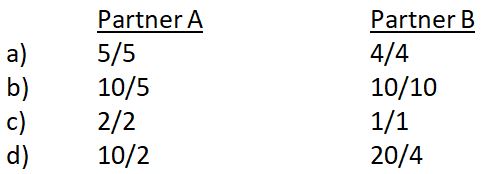The following figures represent the ratio of benefits to contributions for the partners in a relationship. According to equity theory, which of the following relationships is inequitable?

b) 10/5 10/10
You might also like to view...
Couple A displays a higher frequency of demand-withdraw in their interactions than does Couple B.What other differences would you expect to find between the two couples?
a) Couple A will be more well adjusted than Couple B. b) Couple B will demonstrate less marital well-being than Couple A. c) Couple A will be less satisfied with their relationship than Couple B. d) None, the two couples should be relatively similar.
Due to individual variation in people's preferences for touch, virtually any other area of the body can be a secondary erogenous zone.
Answer the following statement true (T) or false (F)
What are the sexuality rights that have recently been added to the human rights?
What will be an ideal response?
Which of the following is true of ovaries and egg cells?
A. The ovaries do not connect directly to the fallopian tubes. B. A woman with only one ovary cannot conceive. C. The egg cannot be fertilized outside the fallopian tubes. D. The ovary consists of about 15 or 20 clusters of mammary glands.